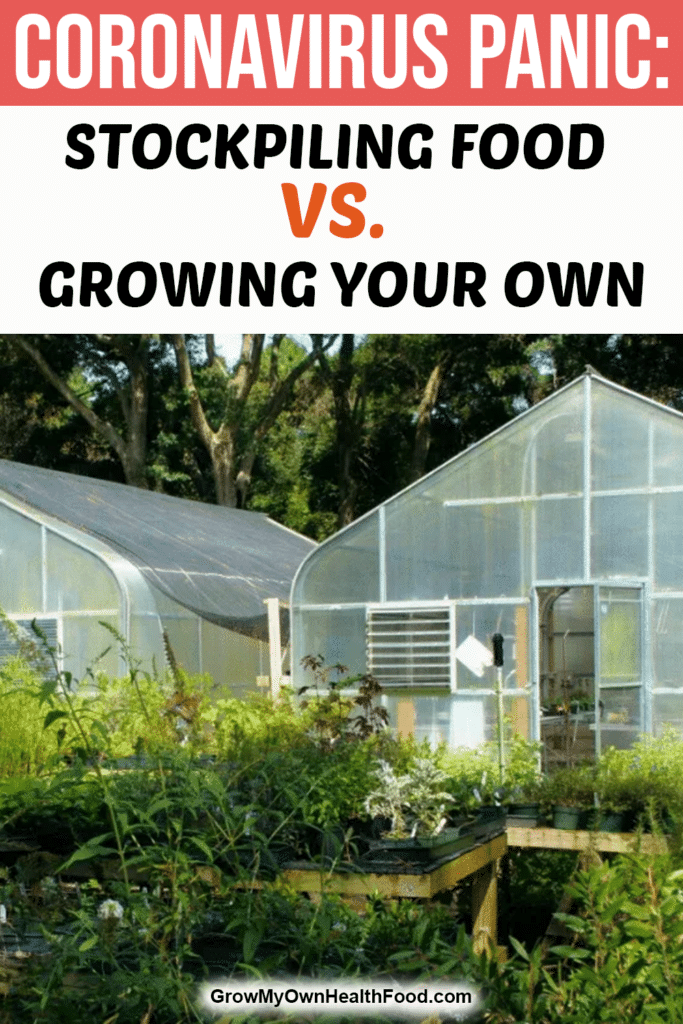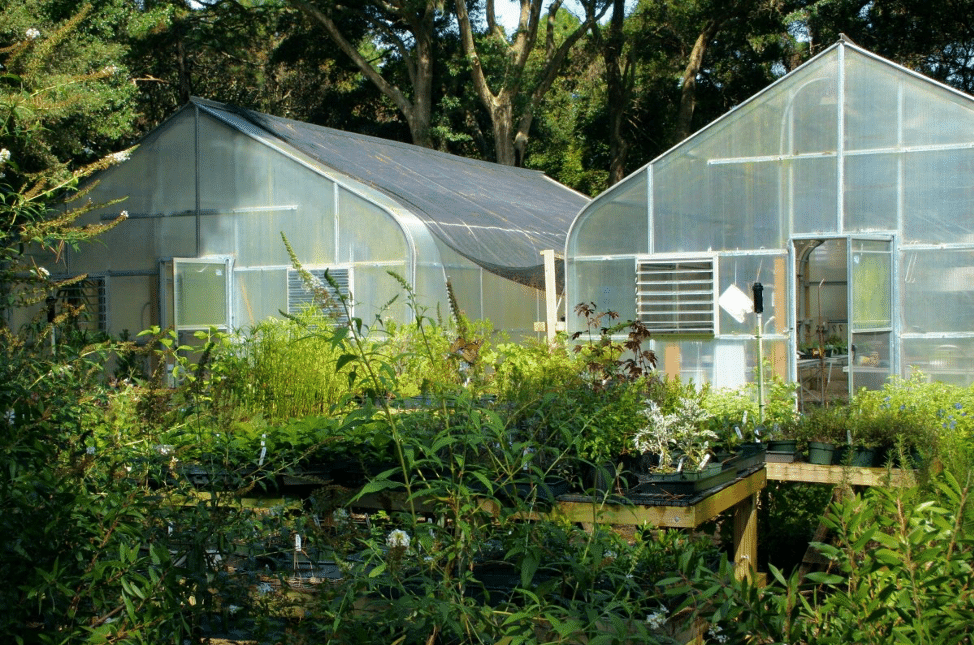The Coronavirus, as President Trump puts it, has completely blindsided the world. Except for a few individuals with the necessary foresight, no one could have predicted the threat of a flu going this bad. At the time of this article’s writing, COVID-19 has affected 220,000 people worldwide and caused over 8900 deaths.
The widespread panic has created a frenzy around supermarkets and hospitals as people rush to stockpile food, tissues, and hand sanitizers. The only one good thing to come out of this pandemic is that doomsday preppers get to tell everyone, “Told you so!”
Hoarding Food
But we’d be among the first to admit that stockpiling food isn’t the most effective way to cope with COVID-19. You’re emptying supermarket shelves and creating food shortage for everyone by doing so – this doesn’t really prepare you from the complete collapse of the society. Should there be one. We are not counting on it, but let’s assume the worst.
Hoarding food does not address the most urgent issue we’re all probably going to eventually face – long-term food shortage. All your stored food supplies will eventually run out and you’ll have nothing left for backup. For this reason, you need to focus your attention on growing your own food.
And to start your own survival garden isn’t that difficult either. Even if you don’t have much space to spare or if you live in an apartment! Here’s what you can do to start your own survival garden.
Start Your Own Survival Garden
1. Get a Seed Vault
- 32 Varieties of All Natural Vegetable Seeds: Non hybrid, Non gmo, Heirloom
- 100% Naturally Grown and Open Pollinated seeds with high Germination Rate
- Vegetable Growing and Seed Harvesting Guide Included with Seeds Tested for Maximum Germination and Yield.
- USA Seeds Stored in Air Tight, Moisture Proof Resealable Bag for Safer, Long Term Storage
- Carefully Selected Seed and Vegetable Varieties to Provide a Well Balanced Healthy Diet.
Prices pulled from the Amazon Product Advertising API on:
Product prices and availability are accurate as of the date/time indicated and are subject to change. Any price and availability information displayed on [relevant Amazon Site(s), as applicable] at the time of purchase will apply to the purchase of this product.
Create an open seed vault to start growing your own food. One product that lets you do this is the Survival Garden Pack, you can easily buy it from Amazon here. It contains 15,000 non GMO vegetable seeds which is more than enough to help you plant food. Some of the crops that you can grow include turnips, winter squash, beans, okra, and more.
2. Find the Perfect Spot to Plant
Finding the right gardening spot absolutely crucial to achieving high growth rates. If you’ve got space in your backyard, start smaller by sectioning off a tiny area or you could try installing raised beds. You could also pick up a few containers from a local garden center near you.
3. Know Your Soil
A little squeeze test should give you a good idea about the soil’s readiness. It will establish whether you need to prepare the soil before you begin gardening. Every crop type requires its own soil type. For instance, onions, potatoes, and carrots will do well in clay soil but strawberries do better with topsoil. Check our article on top organic soils.
4. Enrich the Soil
- Grow More Fertilizers are formulated to supply sufficient amounts of extra nutrients for high yields
- High solubility, purity and the special forms of nitrogen, phosphorus and potassium make Grow More Fertilizers the ideal product
- General Purpose is an all purpose, balanced, high analysis formula for all field or greenhouse grown ornamental or agricultural co
Prices pulled from the Amazon Product Advertising API on:
Product prices and availability are accurate as of the date/time indicated and are subject to change. Any price and availability information displayed on [relevant Amazon Site(s), as applicable] at the time of purchase will apply to the purchase of this product.
Add a generous layer of compost to the soil before you start planting. Another good idea is to use fertilizers to nourish your crops. Try to go for an all purpose fertilizer like the one here with an NPK of 5-5-5.
5. Use Different Techniques for Crop Type
- 【PACKAGE INCLUDE】 - 10 x Seed Tray, 10 x Watertight Base Tray, 10 x Humidity Dome, 20 x Plant Labels, 2 x Plant Tools.
- 【Pretium Material】Compare the cheap PVC material, Our seed trays use PP material for vents to regulate inner seedling trays temperature and humidity, Never broken hatred!
- 【Good Observe for Each Palnts Growth】: The only design in the market- High quality clear plastic trays of this seed grow kit make it easy to observe your plants without interrupting the process.
- 【Perfect Size for Seed Starter】: 1.5”in Length and 1.5”in Wide/ each trays, these seed trays are suitable for small seeds, such as flowers, vegetables, fruits, tomato and other plants.
- 【PROFESSIONAL】- When the Pot Trays Begin to Degrade,The Roots are Also Strong Enough to Penetrate Them. It Overcomes the Common Problems of Crooked Roots and Rotten Roots in the Cultivation of Seedlings with Plastic Pots. Finally, Becoming Organic Fertilizer.
Prices pulled from the Amazon Product Advertising API on:
Product prices and availability are accurate as of the date/time indicated and are subject to change. Any price and availability information displayed on [relevant Amazon Site(s), as applicable] at the time of purchase will apply to the purchase of this product.
Use an appropriate planting method for each type of food you’re trying to grow. Seeds and some bulbs can go right into the ground, but frost-prone foods can be incubated in seed trays and transplanted when they’re stronger. Most vegetables are available as plug plants and can be partially grown to let you transplant them into your garden and then sustaining them until your harvest is ready.
6. Make Sure to Add Water
- 3-IN-1 FUNCTIONS: You can measure soil moisture, pH value and sunlight intensity. Its helpful for you to plant flowers, plants and make them grow healthy and strong(This soil tester CAN ONLY be used in soil, it CANNOT be used to test any liquids)
- EASY TO USE: Simply insert the probes into the soil about 4-6 inches (2/3 of the probes), and youll get your reading
- COMPACT FOR INDOOR & OUTDOOR USE: Know when to water, adjust pH, or change lighting for your flowers, plants both indoor and outdoor
- NO BATTERY NEEDED: No batteries or electricity needed, plug and read
- SCIENTIFICALLY ACCURATE: Sensitive probe could sense changes of the soil and transfer details to the conductor, displaying the accurate values for
Prices pulled from the Amazon Product Advertising API on:
Product prices and availability are accurate as of the date/time indicated and are subject to change. Any price and availability information displayed on [relevant Amazon Site(s), as applicable] at the time of purchase will apply to the purchase of this product.
The water requirement varies from one plant to another. Some plants will thrive with less water than others. Just make sure to keep an eye out on the plants for signs of dehydration. Make sure to be extra careful during time of drought. These meters can help.
7. Protect from Frost
- High Quality & Big Size at Best Price. You can get a plant cover as big size as 8FT*26FT at best price. You can cut it into different size to protect big and small plants in winter easily by your DIY. You can cover it over the plant such as shrub tomato, pepper, pumpkin, strawberry and other vegetable.
- Multi-application. Made from 0.9 oz/sq yd microfiber fabric. Provides protection from frost, wind, snow,hail and low temperature in winter. And also can protect your plants from strong sun, insect and birds during spring and summer.
- Great tool for germination and rapid seedling growth. High Quality 60D fabric is UV stabilized and reusable. Lightweight & Soft fabric is plant friendly and allows air and moisture to reach your plants.
- EASY To USE. You can cover the plant covers for freeze over your the plants loosely directly and then stabilize the corners with weights. Includes 6pcs Garden Stakes.
- Plant blanket effectively protects your valuable plants against frost, hail, snow, cold wind,other severe weather and insects bir
Prices pulled from the Amazon Product Advertising API on:
Product prices and availability are accurate as of the date/time indicated and are subject to change. Any price and availability information displayed on [relevant Amazon Site(s), as applicable] at the time of purchase will apply to the purchase of this product.
Some plants are vulnerable to frost attacks. Make sure to reduce the potential threat by giving them appropriate cover. A good idea is to use polythene to protect against harsh weather and dangerous pests. Polythene is effective because it retains heat for long and can protect crops that are weak against frost.
8. Protect Your Crops from the Creepy Crawlies
Crops are particularly weak against pests like insects and birds. In this case you can use a fine mesh cover to provide protection. It is worth noting that a fine mesh will do little against harsh weather but extremely effective against live predators. Also check out our article for organic pest control options.
Failure is not an Option
Failure is not an option when everything around you starts to collapse. You need to build up your soil, give fruit trees and bushes enough time to mature, and perfect your food gardening skills. Make sure to only plant crops that are proven to grow in your climate. It is no use planting winter crops during summer and vice versa – so make sure to plan ahead when you start your survival garden.
These 9 Foods are Perfect Survival Garden Crops
Your priority should be to grow foods that are easy to store over the course of several months without decaying. To save you from doing the lengthy research, we’ve listed our pick of the best year-round crops that are known for their durability, yield, and growth rates.
1. Beans
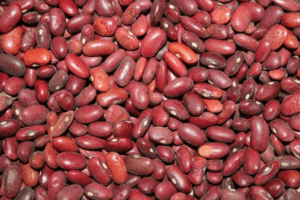
Beans are the go-to food in times of crisis for several reasons. For starters, they are rich in vitamins, minerals, and protein. They are also very high in calories and provide you with the necessary energy needed to power through the day. Beans can be eaten raw or dried on the vein, harvested, and stored. They have a massive shelf life when dried and can be prepared in a variety of ways.
And here’s the best part, beans serve as the perfect rotation crop because they give nitrogen back into the soil when planted, providing help to other plants when they need it the most to keep your survival garden flourishing.
2. Winter Squash
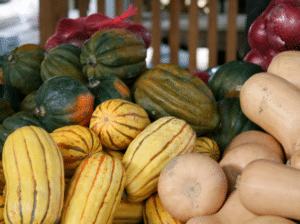
Winter squash is easy to store and extremely durable especially in the winter months. There are over 50 varieties of squash including spaghetti, butternut, and Hubbard. Provided you know what you’re doing, winter squash can be stored for up to 6 months in a dark, cool place. They require a well drained soil enriched with plenty of sun. Just make sure to protect them from frost.
3. Potatoes
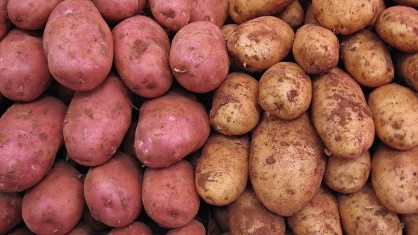
Potatoes are easily among the most versatile vegetables that can be grown year-round and in a variety of soil types. They are spread all over the world and can be stored for a relatively long time. Potatoes are best grown in rows and take around 120 days to fully mature.
4. Carrots
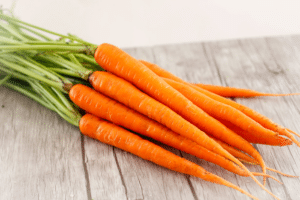
Carrots are a staple crop prioritized by farmers around the world. They can be stored well in the winter months and provide you with all your nutrition needs and add variety to your diet. Carrots grow in well-drained, sandy soil. Make sure to protect them from frost and plant them 3 weeks before the last expected frost. Most carrots take only 80 days to fully mature.
5. Cabbage
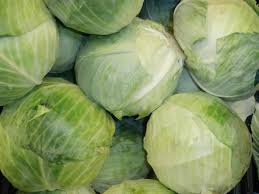
Cabbage is a great survival crop because it’s easy to grow and store. It is chock full of nutrition and retains its robust nutrition profile even when cooked. Make sure to provide your cabbage plantation at least 6 hours of full sun every day. It prefers well-drained, moist soil with plenty of organic matter. The soil pH should be between 6.5 and 6.7.
6. Buckwheat
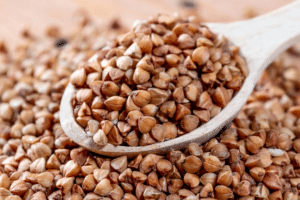
Don’t let its name fool you. Buckwheat is not the same as wheat. It is a small, hard fruit that contains a single seed. Buckwheat packs the same nutritional punch as cereal and shares many of the same culinary traits. It can be ground into flour to provide about 13% of protein and 70% of carbohydrates. This is the same as traditional wheat. Moreover, buckwheat has a better amino acid profile than most versions of wheat because it has relatively less lysine. Buckwheat has a very low fat count at 3%. Buckwheat takes about 8 to 10 weeks to fully mature.
7. Sweet Potatoes
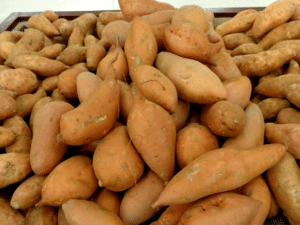
They are similar to ‘normal’ potatoes, only much healthier because they contain more nutrients. Sweet potatoes are very easy to grow although they prefer a tropical, non-arid climate. More importantly, sweet potatoes can be stored at room temperature for at least 2 months. If they are cured, you can store them for many more months.
8. Garlic
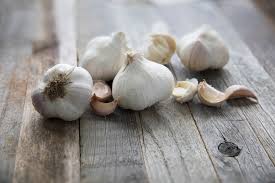
Garlic makes a great addition to your survival garden. It adds a lot of flavor to just about anything you eat. It is also extremely rich in nutrition and has been used as a medicinal plant for centuries. Garlic is a powerful antibiotic and antiviral, two traits that will definitely come in handy during pandemics. Garlic is easy to grow and can be stored for several months without requiring the need to cure it.
9. Peas
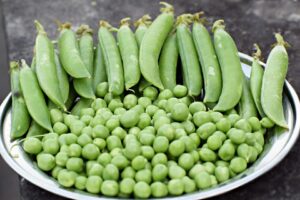
Peas are best sown in early spring. They are relatively easy to grow and take only 70 days to fully mature. Most pea plants will reach a height of at least 3 feet, so make sure you provide them with a type of structure for support. Peas can also fix the nitrogen in your soil if they’re planted back, making it available for other plants. That being said, peas do not stay fresh for long unless you refrigerate them.
Start Early, Start Now
We can’t realistically predict the ramifications of COVID-19 and how much more havoc it will cause. The best thing you can do is to start planting a survival garden now. Don’t wait for the complete collapse of society because it’s a matter of survival.
